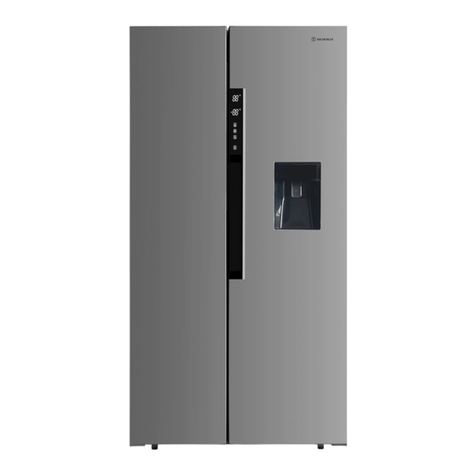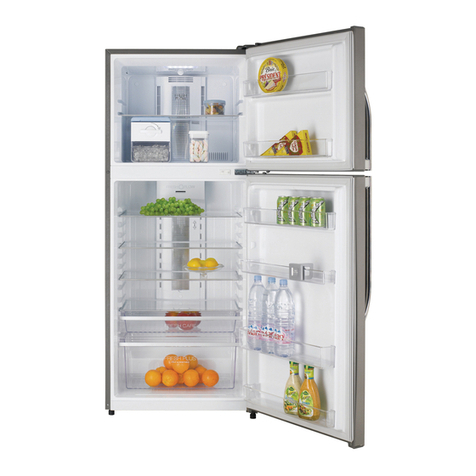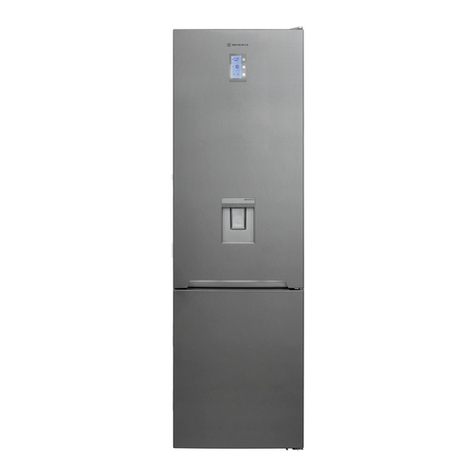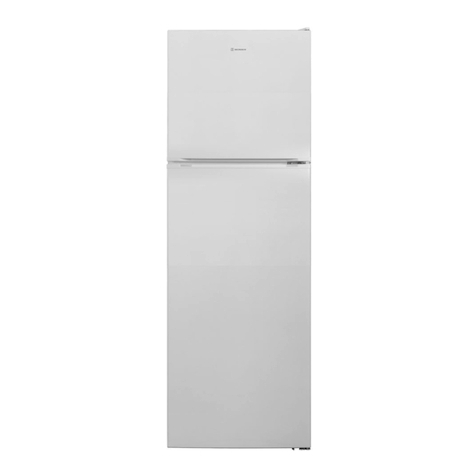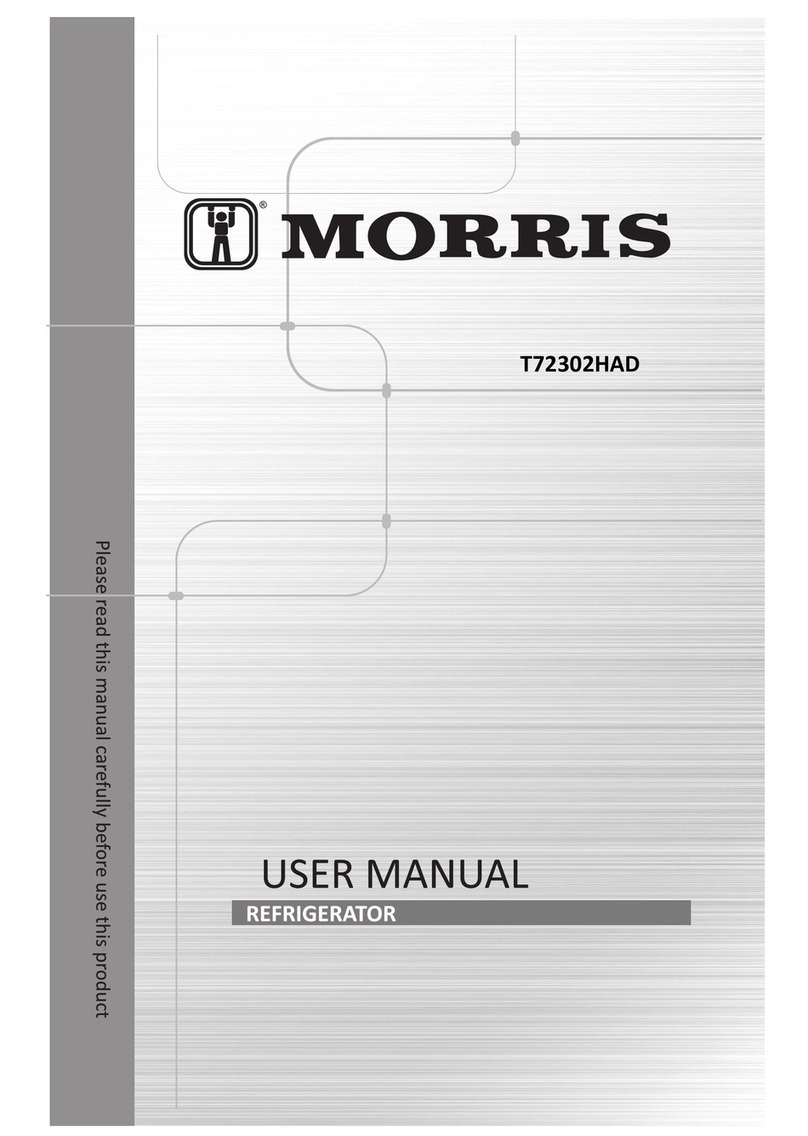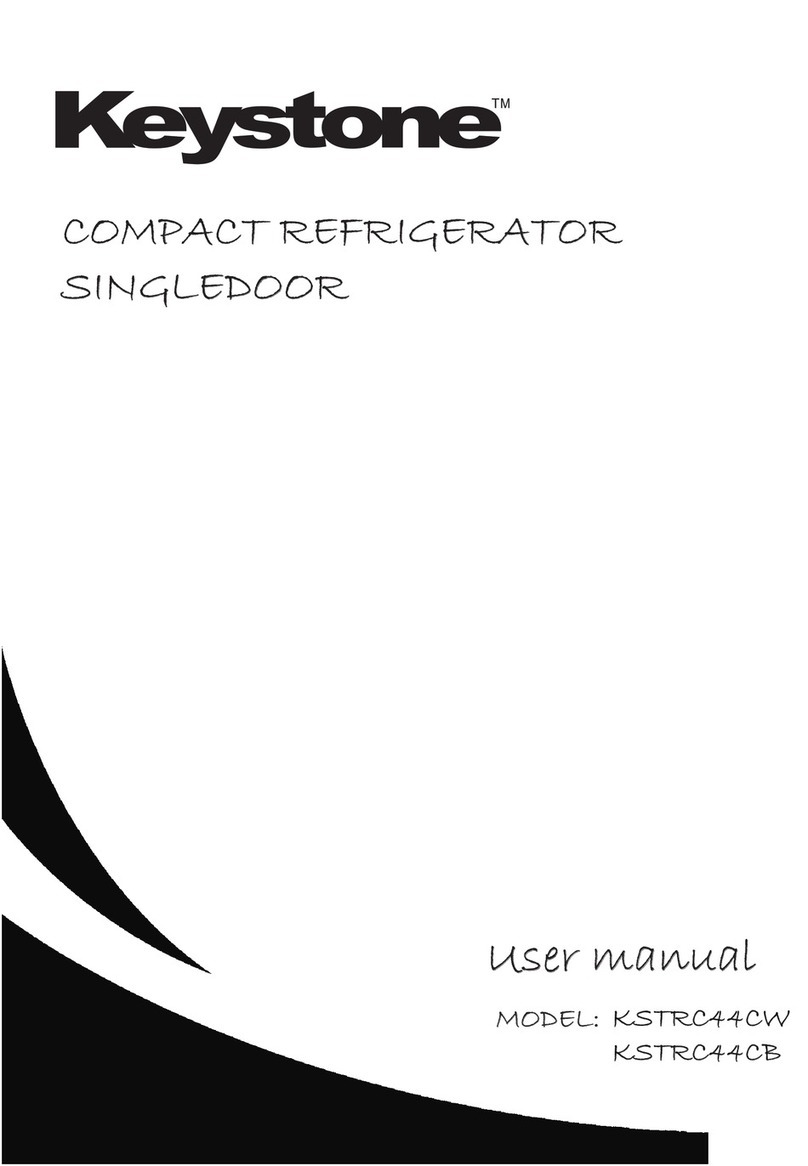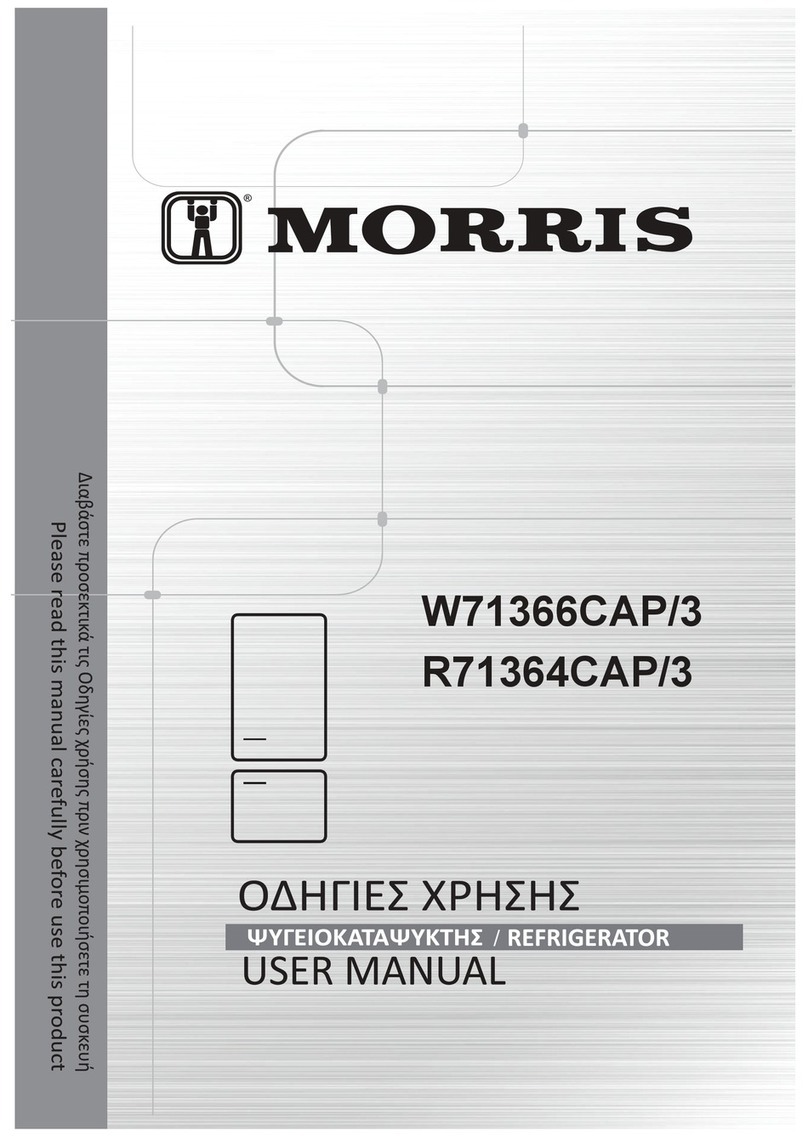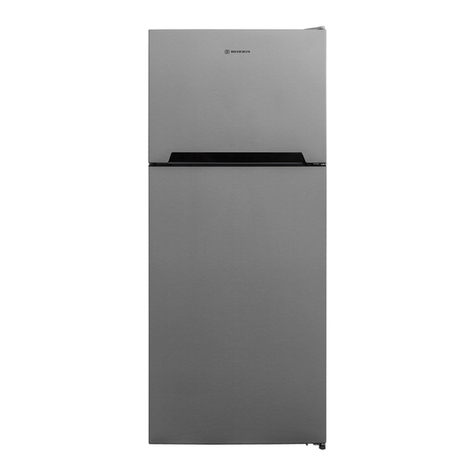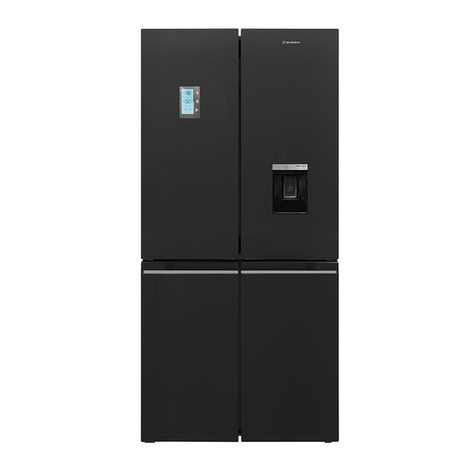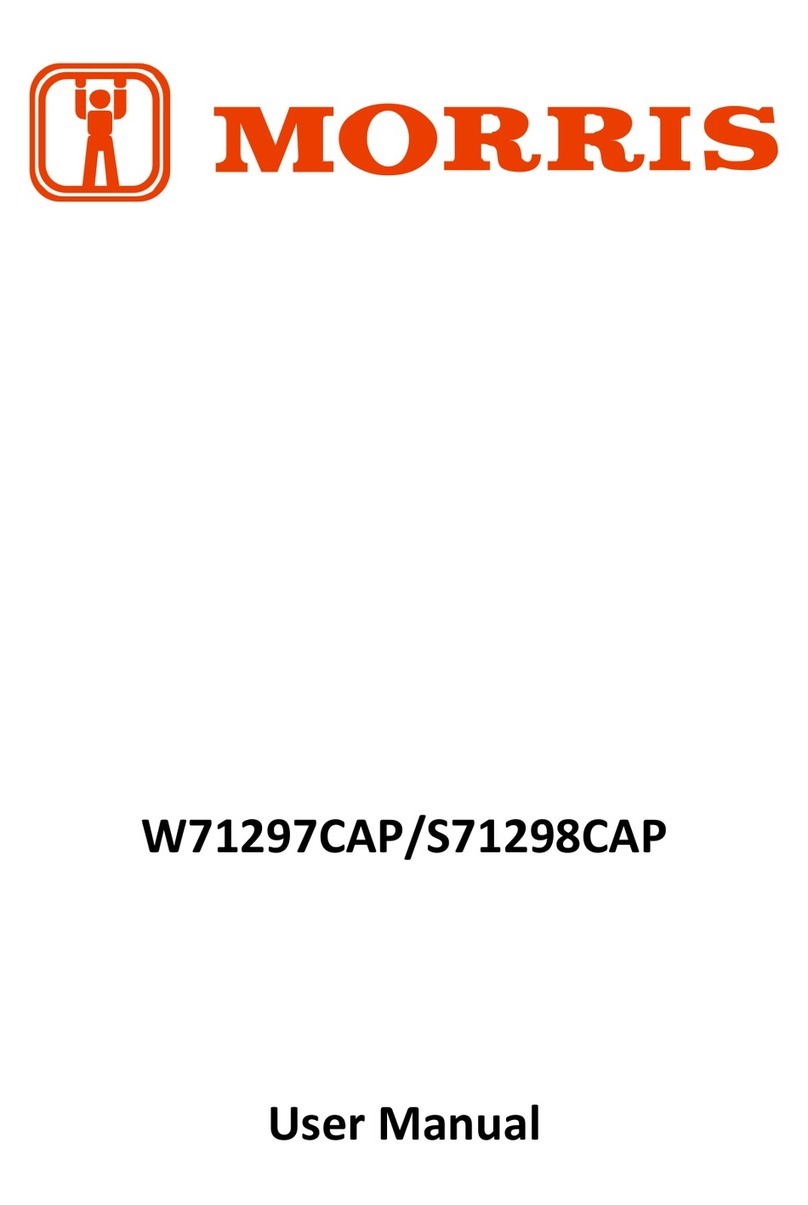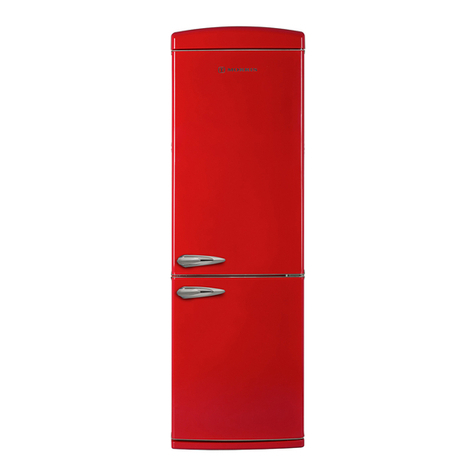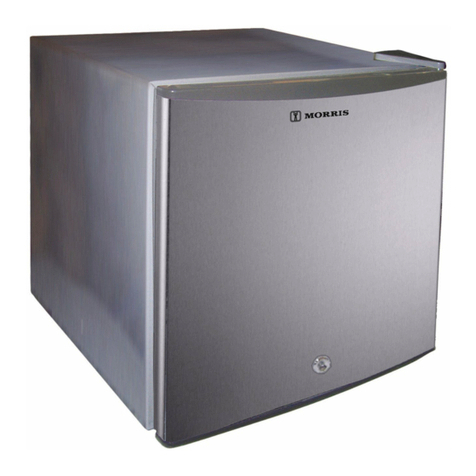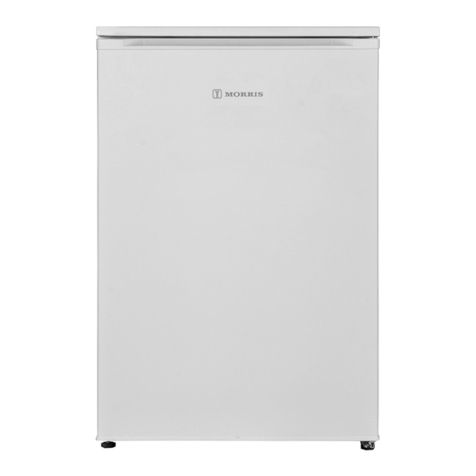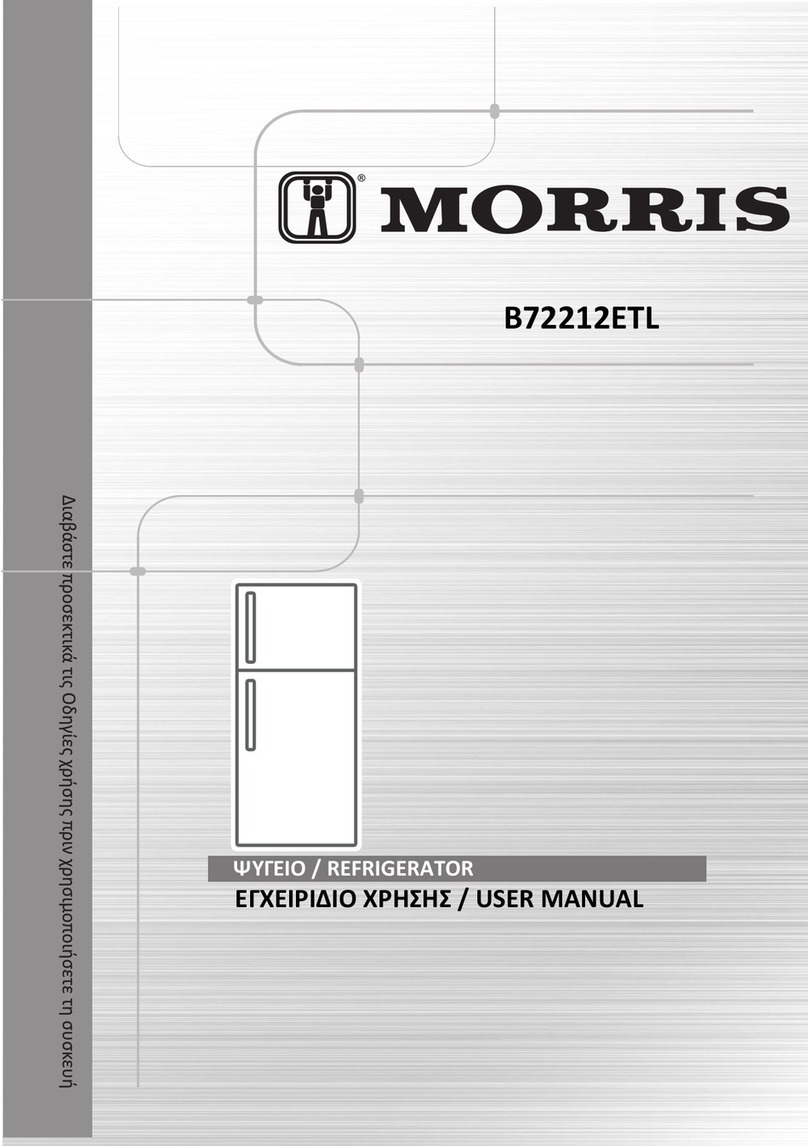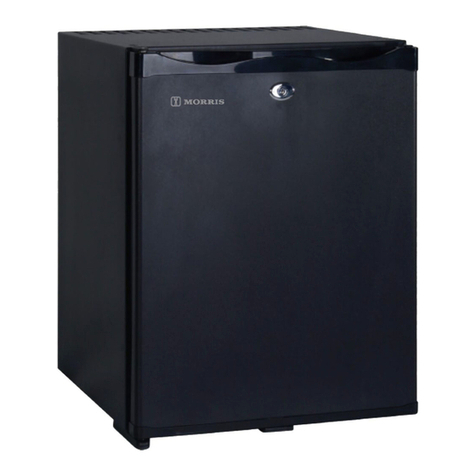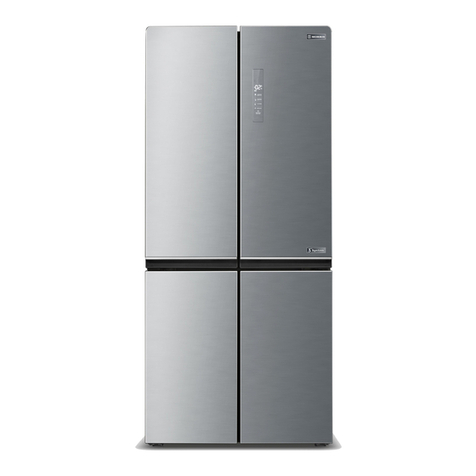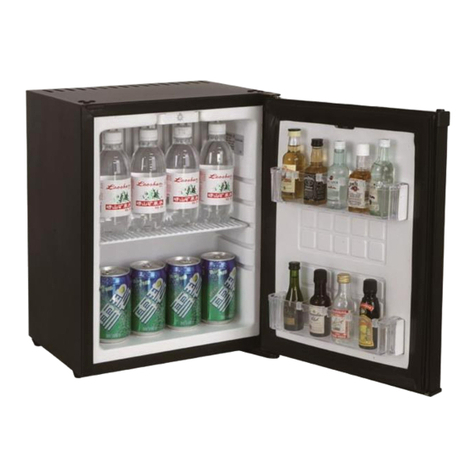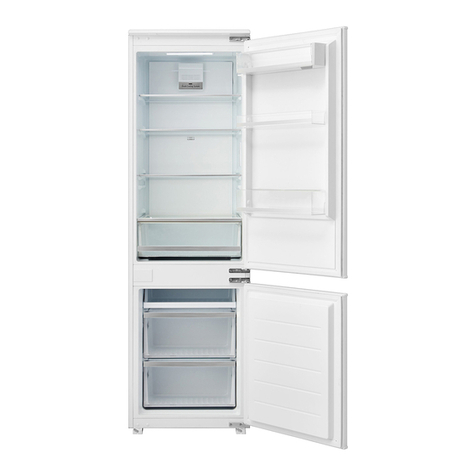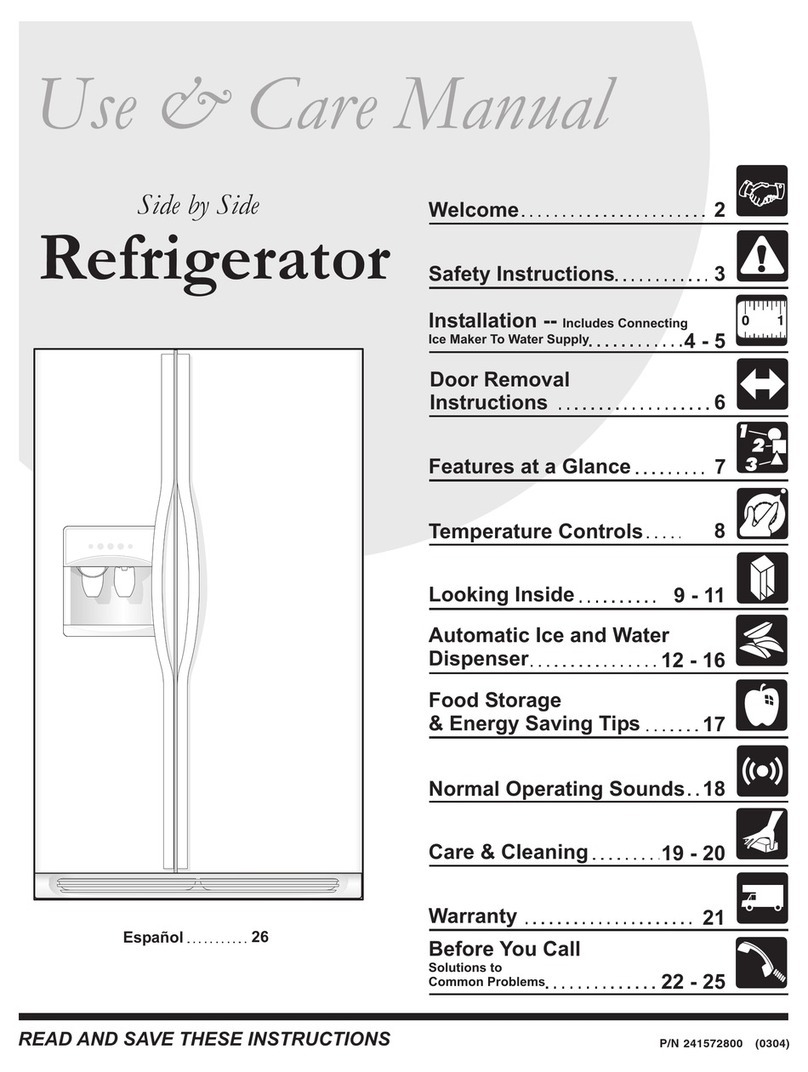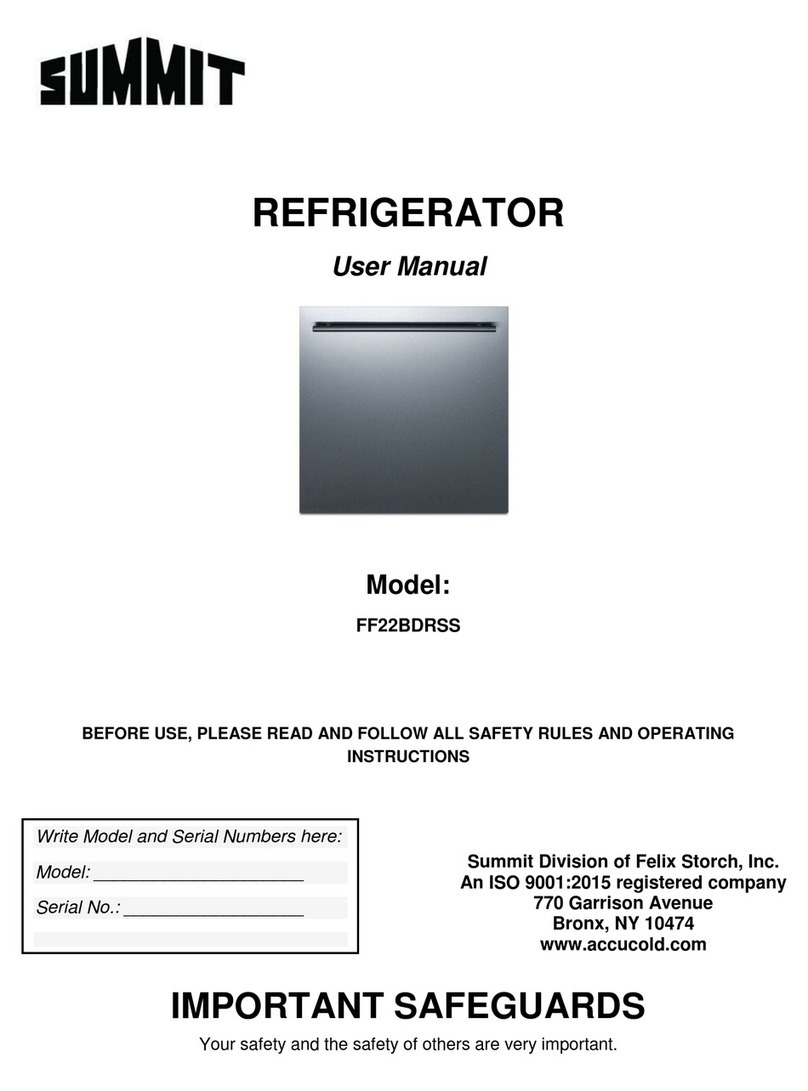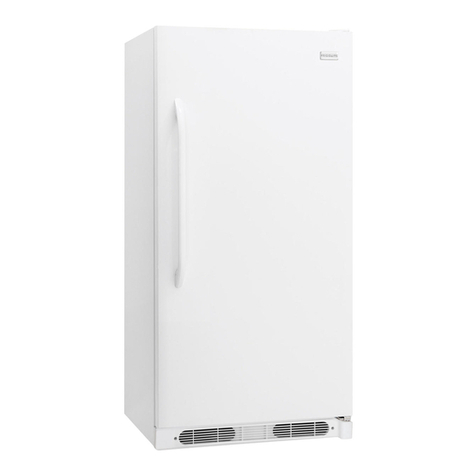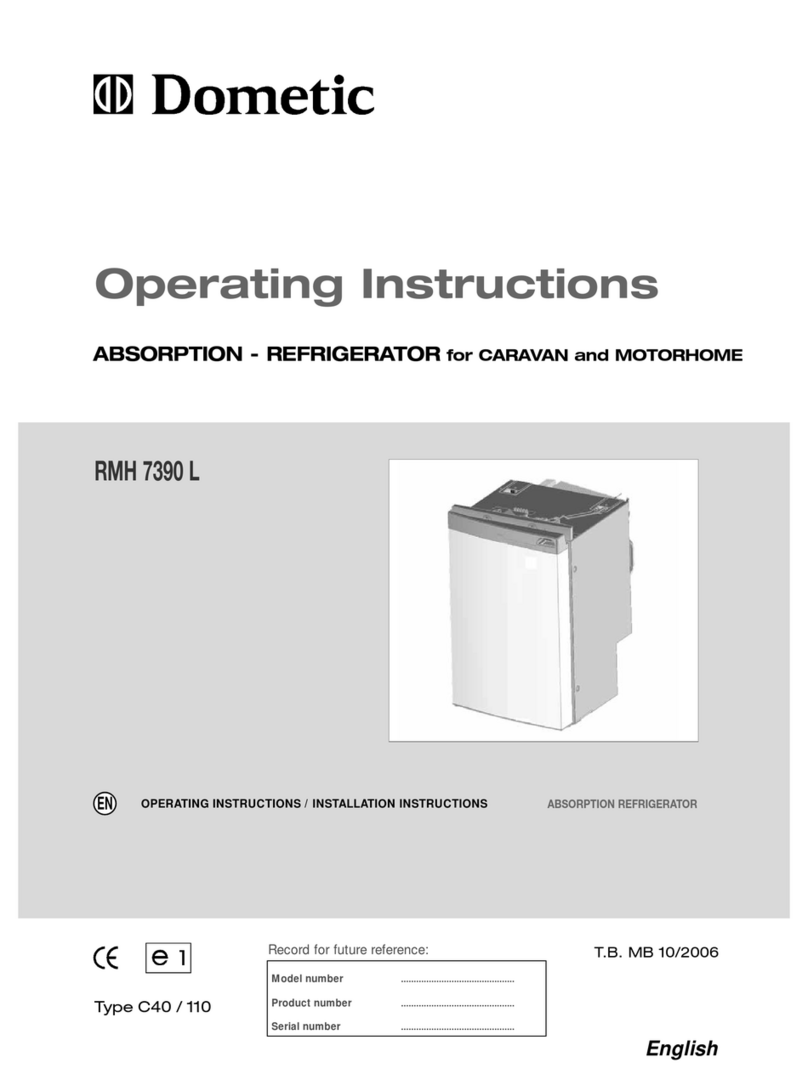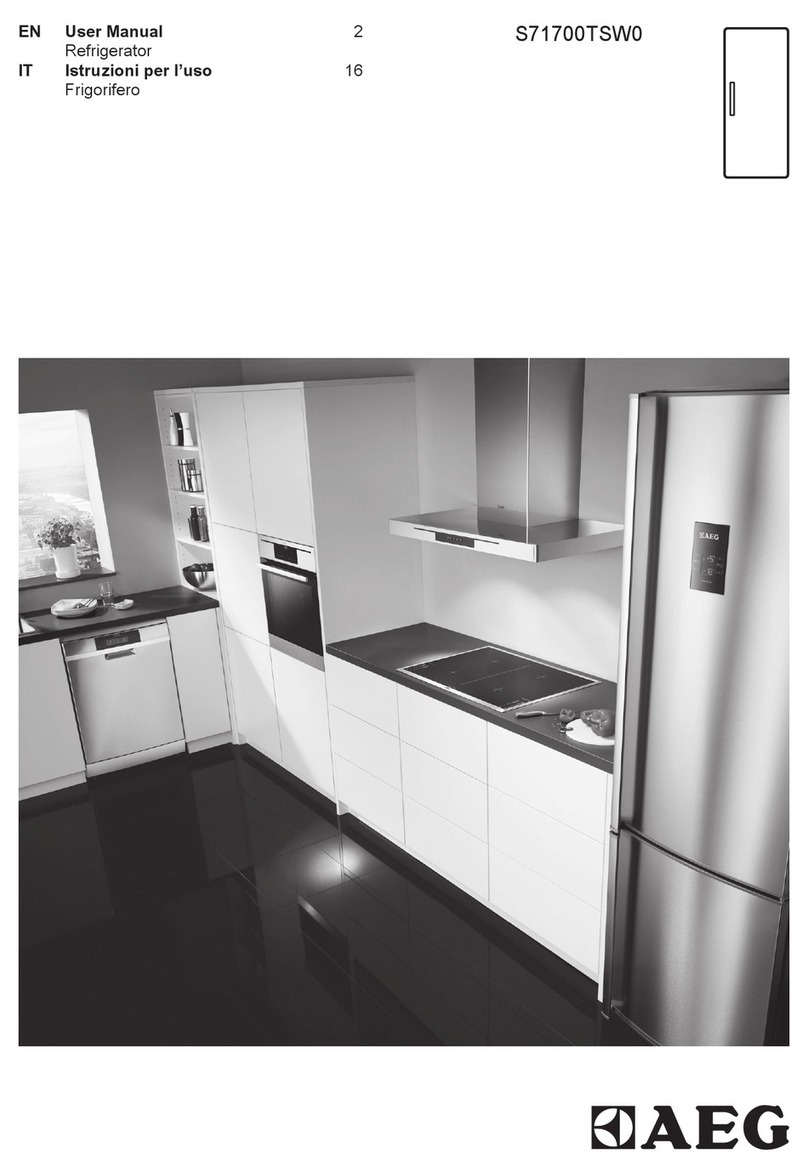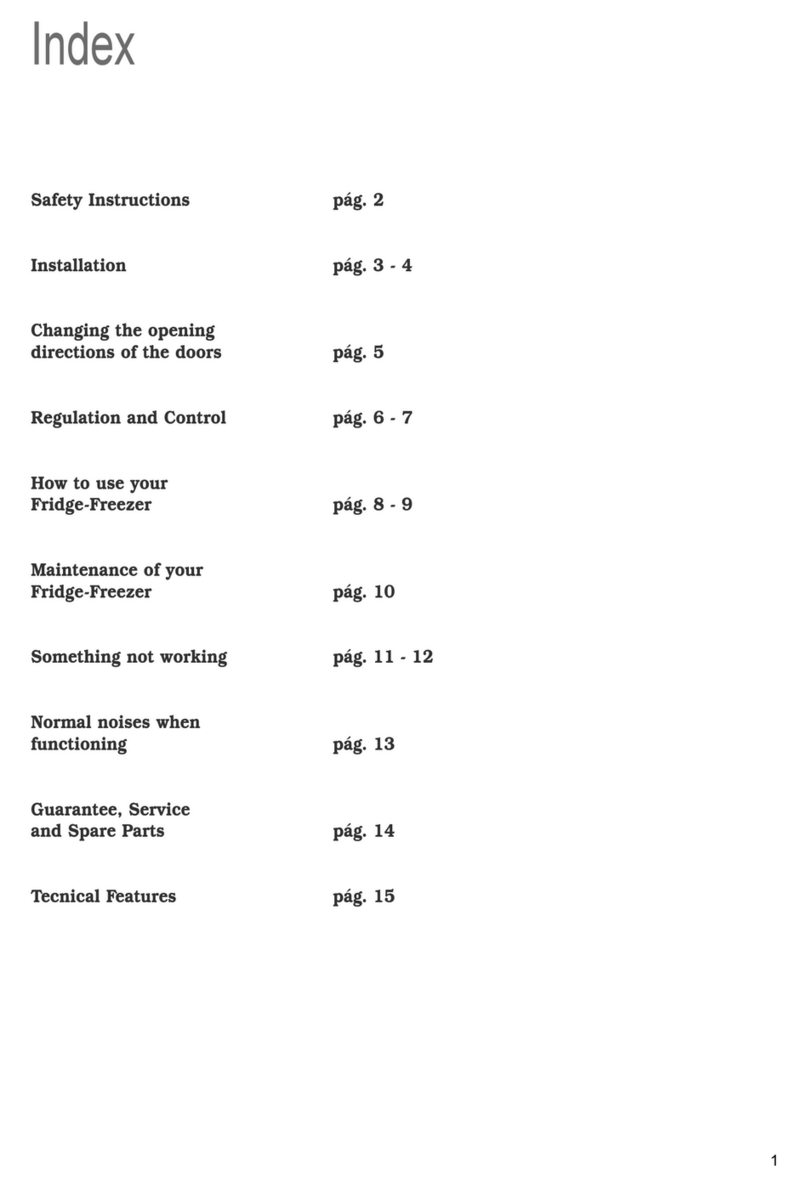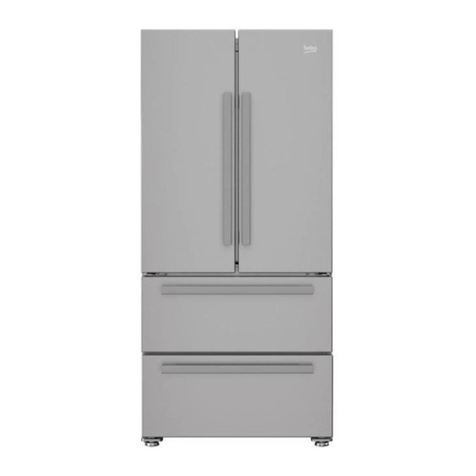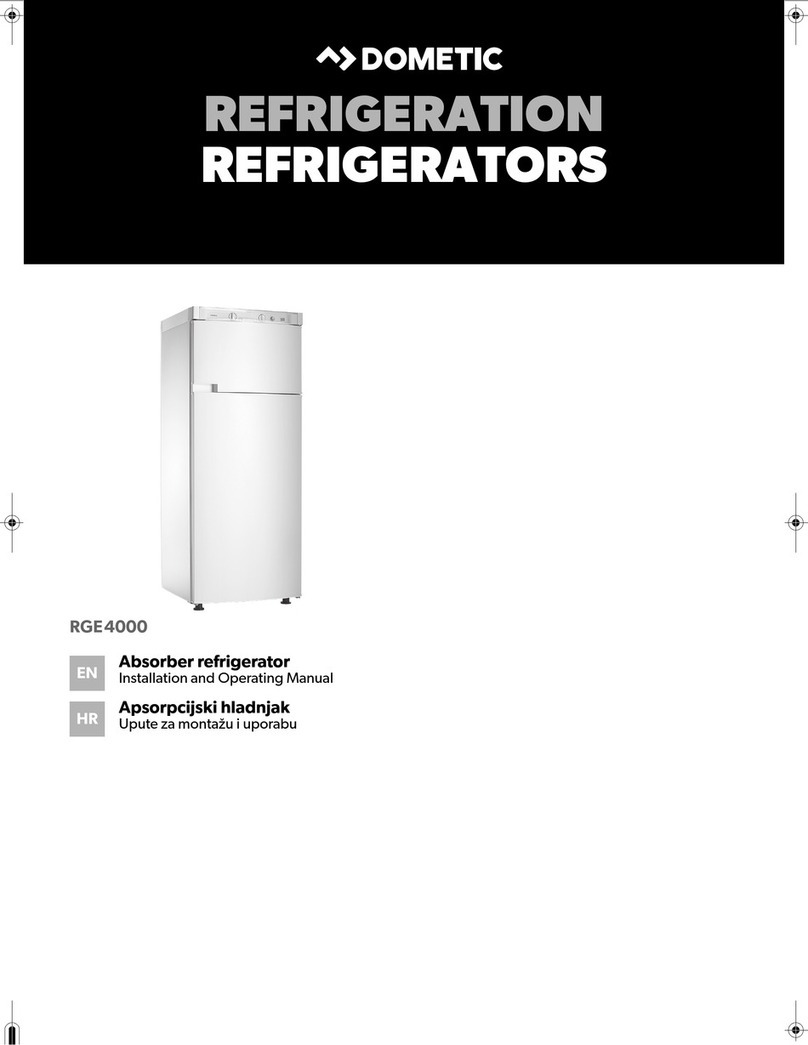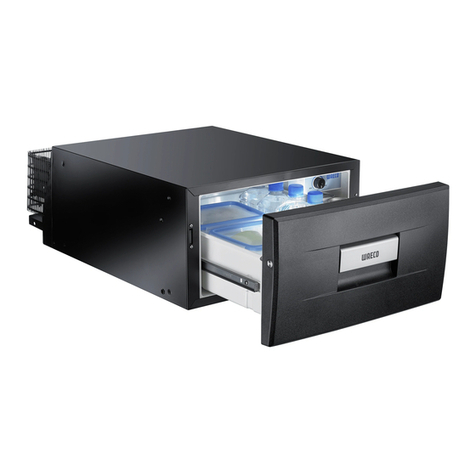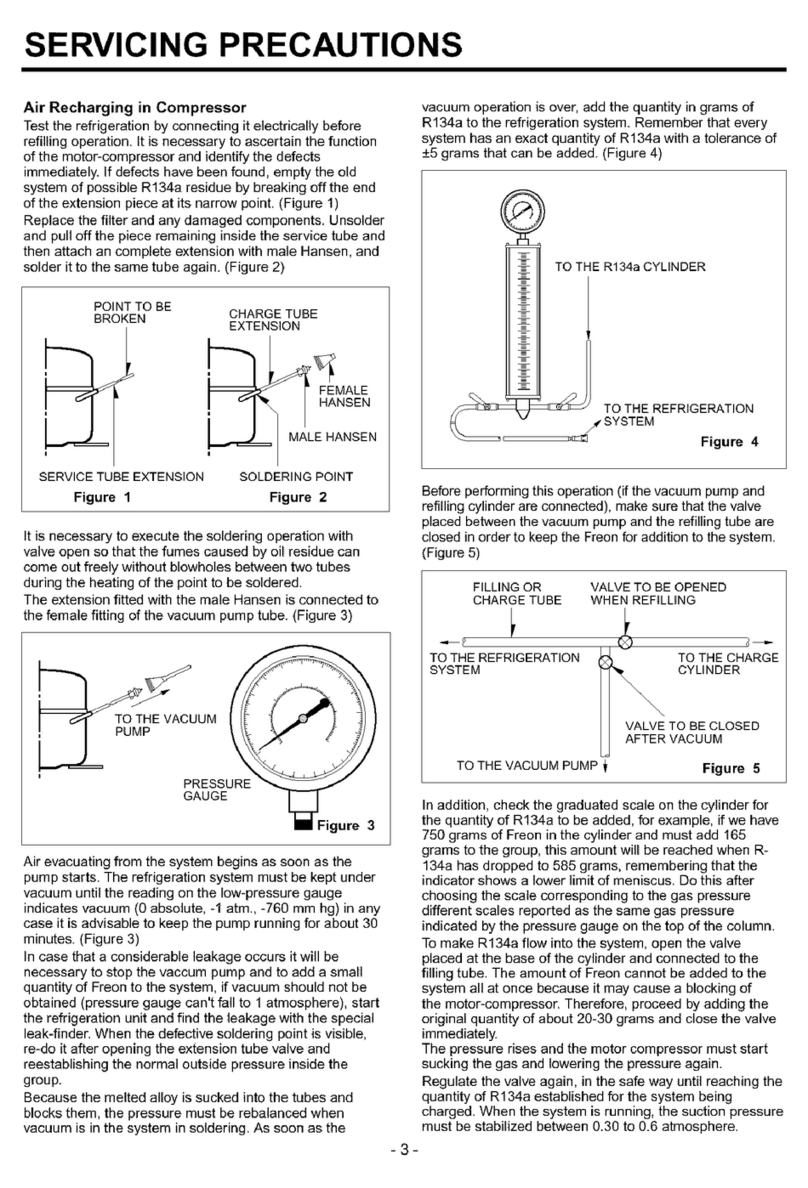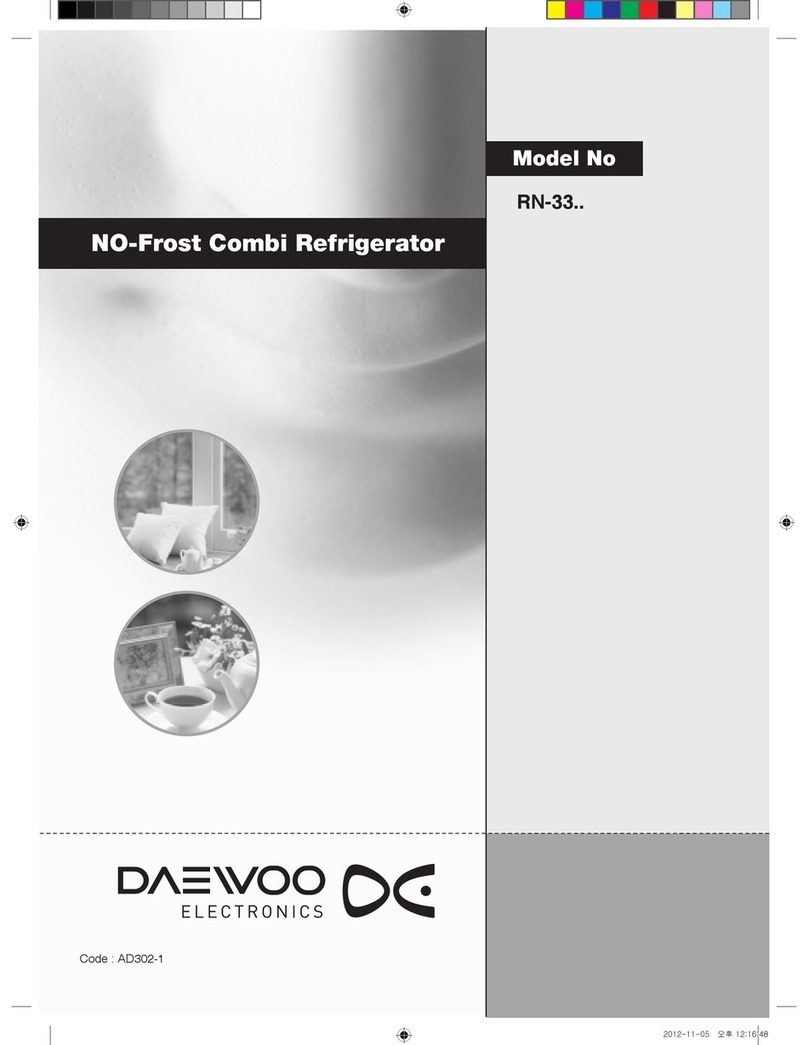
EN - 9
1.2 Installation warnings
Before using your fridge freezer for the rst
time, please pay attention to the following
points:
•The operating voltage for your fridge
freezer is 220-240 V at 50Hz.
•The plug must be accessible after
installation.
•Your fridge freezer may have an odour
when it is operated for the rst time. This
is normal and the odour will fade when
your fridge freezer starts to cool.
•Before connecting your fridge freezer,
ensure that the information on the data
plate (voltage and connected load)
matches that of the mains electricity
supply. If in doubt, consult a qualied
electrician.
• Insert the plug into a socket with an
ecient ground connection. If the socket
has no ground contact or the plug does
not match, we recommend you consult a
qualied electrician for assistance.
•The appliance must be connected
with a properly installed fused socket.
The power supply (AC) and voltage at
the operating point must match with
the details on the name plate of the
appliance (the name plate is located on
the inside left of the appliance).
•We do not accept responsibility for any
damages that occur due to ungrounded
usage.
•Place your fridge freezer where it will not
be exposed to direct sunlight.
•Your fridge freezer must never be used
outdoors or exposed to rain.
•Your appliance must be at least 50 cm
away from stoves, gas ovens and heater
cores, and at least 5 cm away from
electrical ovens.
•If your fridge freezer is placed next to a
deep freezer, there must be at least 2
cm between them to prevent humidity
forming on the outer surface.
•Do not cover the body or top of fridge
freezer with lace. This will aect the
performance of your fridge freezer.
• Clearance of at least 150 mm is required
at the top of your appliance. Do not place
anything on top of your appliance.
•Do not place heavy items on the
appliance.
• Clean the appliance thoroughly before
use (see Cleaning and Maintenance).
•Before using your fridge freezer, wipe all
parts with a solution of warm water and
a teaspoon of sodium bicarbonate. Then,
rinse with clean water and dry. Return all
parts to the fridge freezer after cleaning.
•Use the adjustable front legs to make
sure your appliance is level and stable.
You can adjust the legs by turning them
in either direction. This must be done
before placing food in the appliance.
•When the product is running, high
temperature can be noticed on the side
panels. This situation is normal.
• In order for the product to work eciently,
there must be some gap around it for
air circulation. If you are going to place
the product in a recessed area on the
wall, make sure that the gap should be
100 mm between top surface and ceiling,
50 mm between walls and side panels.
• The distance between the appliance and
back wall must be a maximum of 75 mm.
1.3 During Usage
•Do not connect your fridge freezer to
the mains electricity supply using an
extension lead.
•Do not use damaged, torn or old plugs.
•Do not pull, bend or damage the cord.
•Do not use plug adapter.
•This appliance is designed for use by
adults. Do not allow children to play with
the appliance or hang o the door.
• Never touch the power cord/plug with wet
hands. This may cause a short circuit or
electric shock.
•Do not place glass bottles or cans in the
ice-making compartment as they will
burst when the contents freeze.
